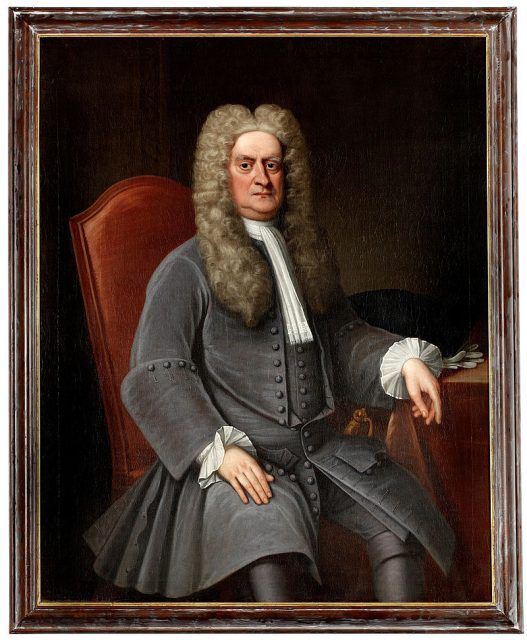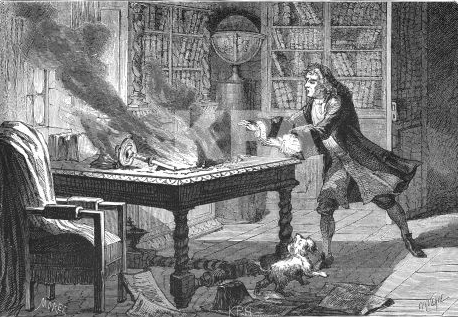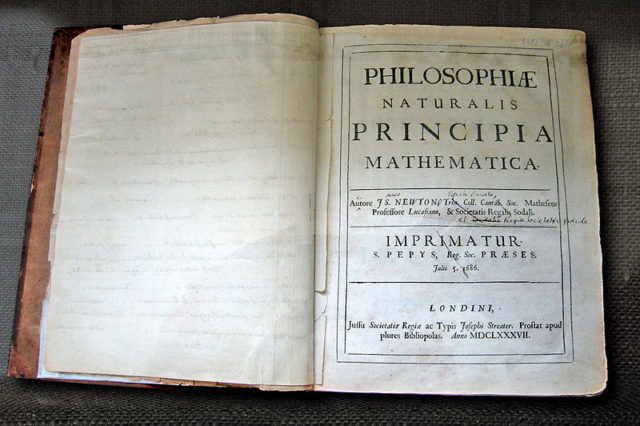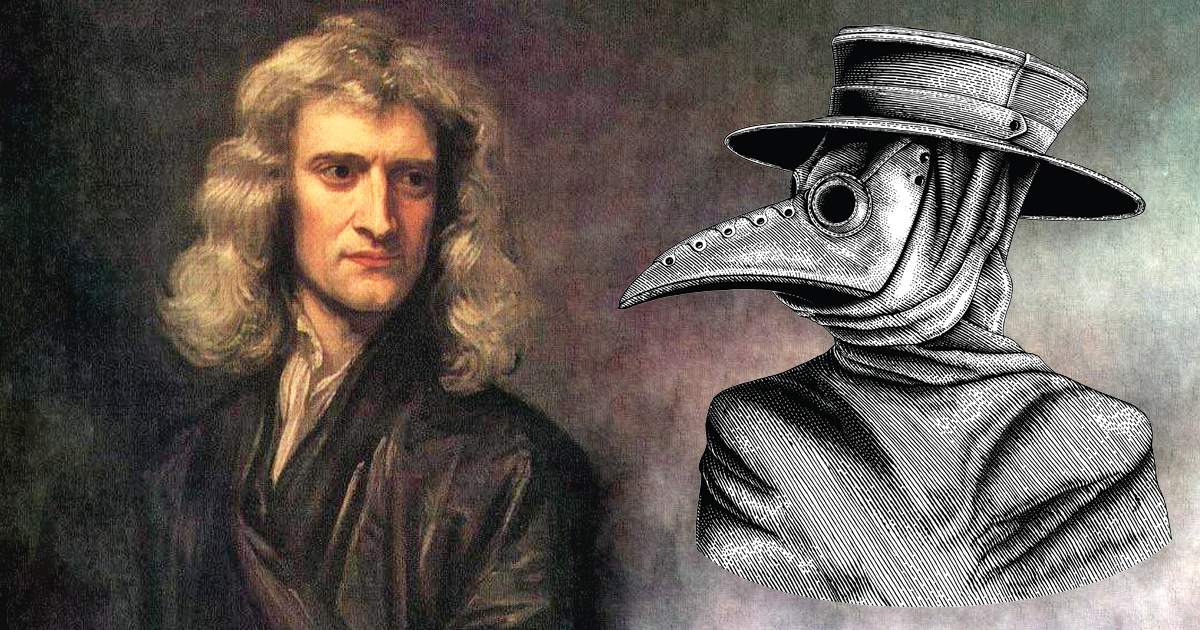Isaac Newton’s cure for the Plague shouldn’t be read before eating. But wait, Newton had a remedy for Bubonic Plague? He certainly did, at least by his reckoning. And now the famous scientist’s original writings on the subject are up for online auction.
They make for interesting, if icky reading. How so? Because the master mathematician seemed to believe toads were crucial to tackling the deadly disease… or, more specifically, what that toad had for breakfast. Yes, toad vomit was a key ingredient of the bizarre concoction…
In a move sure to shock animal lovers, the 17th/18th century author recommended dangling a live toad upside down inside a chimney! In an unappetizing display of the gravitational forces which made Newton’s name, the sorry creature “at last vomited up earth with various insects in it, onto a dish of yellow wax, and shortly after died” according to the great scientist.

A plague bearer could then grind the toad into powder form and mix up special “lozenges” with the vomit. “Combining powdered toad with the excretions and serum made into lozenges and worn about the affected area, drove away the contagion and drew out the poison” the toad torturer wrote. Added to the list of remedies were amulets made from hyacinth/jacinth, amber and sapphire.
Together, Newton believed, they somehow overcame the forces of the notorious pandemic. These alarming thoughts are committed to print on 2 handwritten pages, offered by Bonhams as part of an event called Essential Genius: 10 Important Manuscripts. From the 1st to the 10th of June, bidders can get their cyber mitts on treasures such as Newton’s “cure”, a signed Walt Whitman draft, Plato’s dialogues on a Renaissance manuscript and Mark Twain’s views on medicine.

Newton came up with the idea after the Great Plague of London wiped out approx a quarter of citizens between 1665 – 66. Confined to the family pile of Woolsthorpe Manor when Trinity College, Cambridge went into lockdown, he worked on various exciting projects, including experiments with gravity. The well-known apple tree story, where fruit fell on his head, comes from this time. Plague appears to have shaped Newton’s research on key areas, as well as this later toad theorem.

When Newton emerged from self isolation in 1667, he took interest in the writings of Jan Baptist van Helmont (1580 – 1644), a physician from Belgium. Referring to comments made by Bonham’s specialist Darren Sutherland, Smithsonian Magazine writes, “van Helmont, who also dabbled in philosophy, mysticism and chemistry, was ‘a great influence on Newton.’” The Belgian physician wrote the book De Peste following his experiences in Antwerp during an outbreak of plague in 1605.
Newton’s 1669 response to this was his toad vomit remedy. “In analyzing and distilling Van Helmont’s first-hand and medical knowledge,” Bonham’s website notes, “Newton records both causes, modes of transmission, and cures, identifies symptoms and their identification, as well as prescriptions for avoiding the plague.” In another section of the text, Newton documents an unfortunate man who catches the plague via his fingers through a “pestilent papyrus”. He expired in a couple of days.
Isaac Newton’s conclusions about the cure for the plague weren’t of much interest to his hallowed seat of learning. “Cambridge kept only the mathematical and scientific papers and returned Newton’s more controversial writings on alchemy, theology and philosophy” writes the Guardian. “These papers, including Newton’s notes on Van Helmont, were sold in 1936 to private collectors, among them (economist) John Maynard Keynes.”
Related Article: Isaac Newton’s Secret Religious Writings and Apocalyptic Prediction
Bonham’s has an estimate of $80 – 120,000 for the papers. Quoted by the auction house, Sutherland remarks, “They represent the only significant writings on the subject by the world’s greatest scientific mind that we have been able to trace. A timely reminder, perhaps, that there is nothing new under the sun.”
That said, hanging a toad inside a chimney till it upchucked certainly broke new ground!
